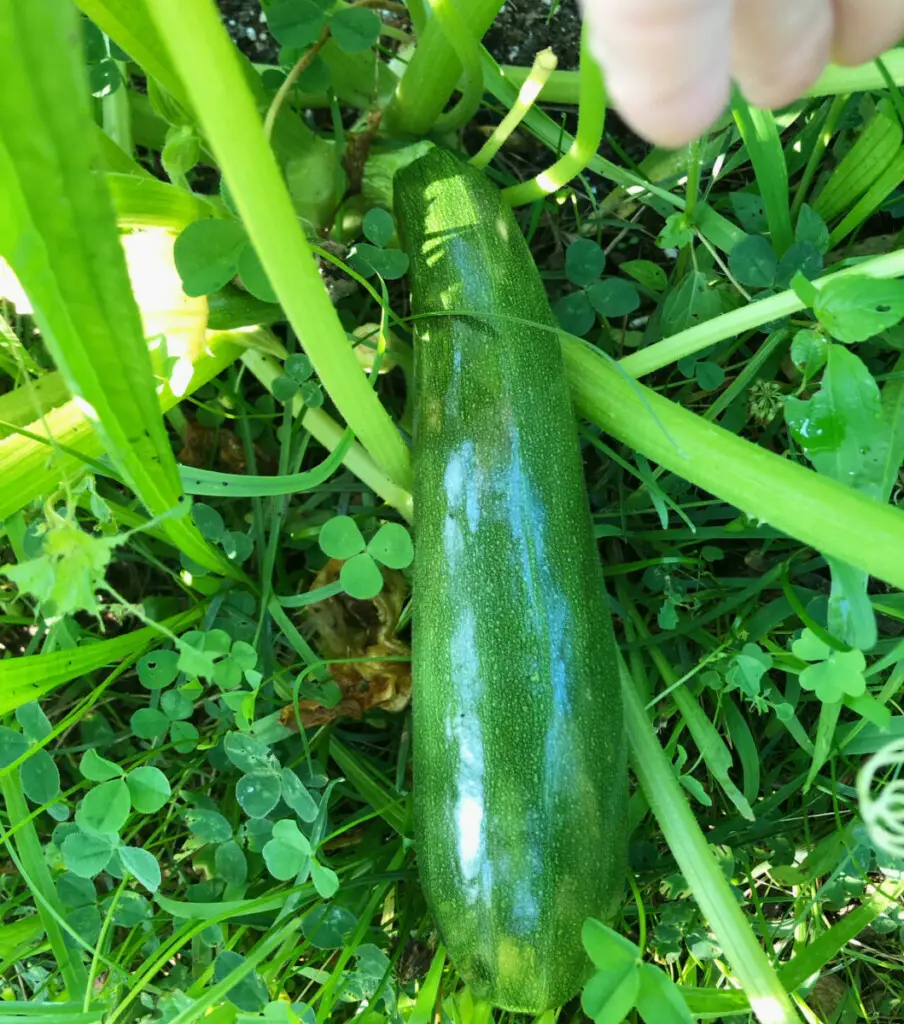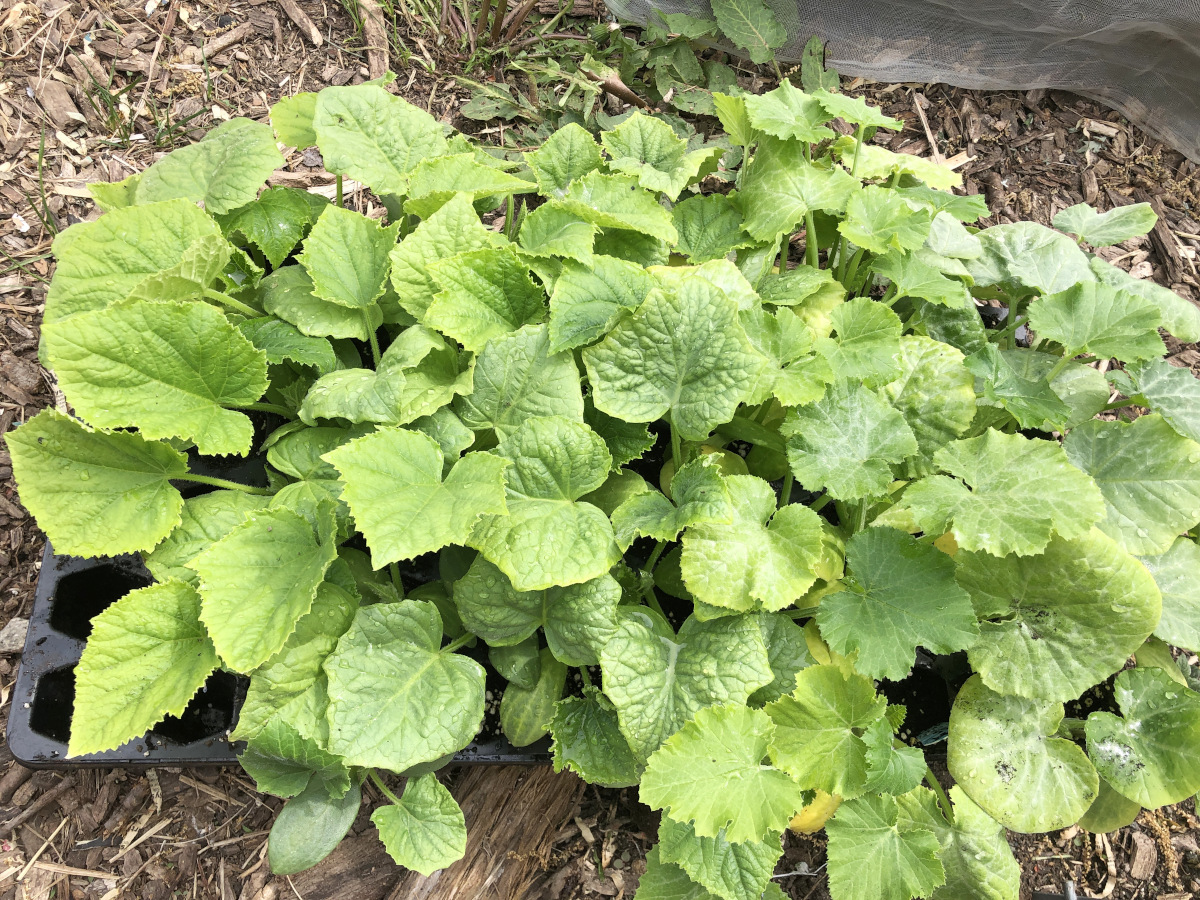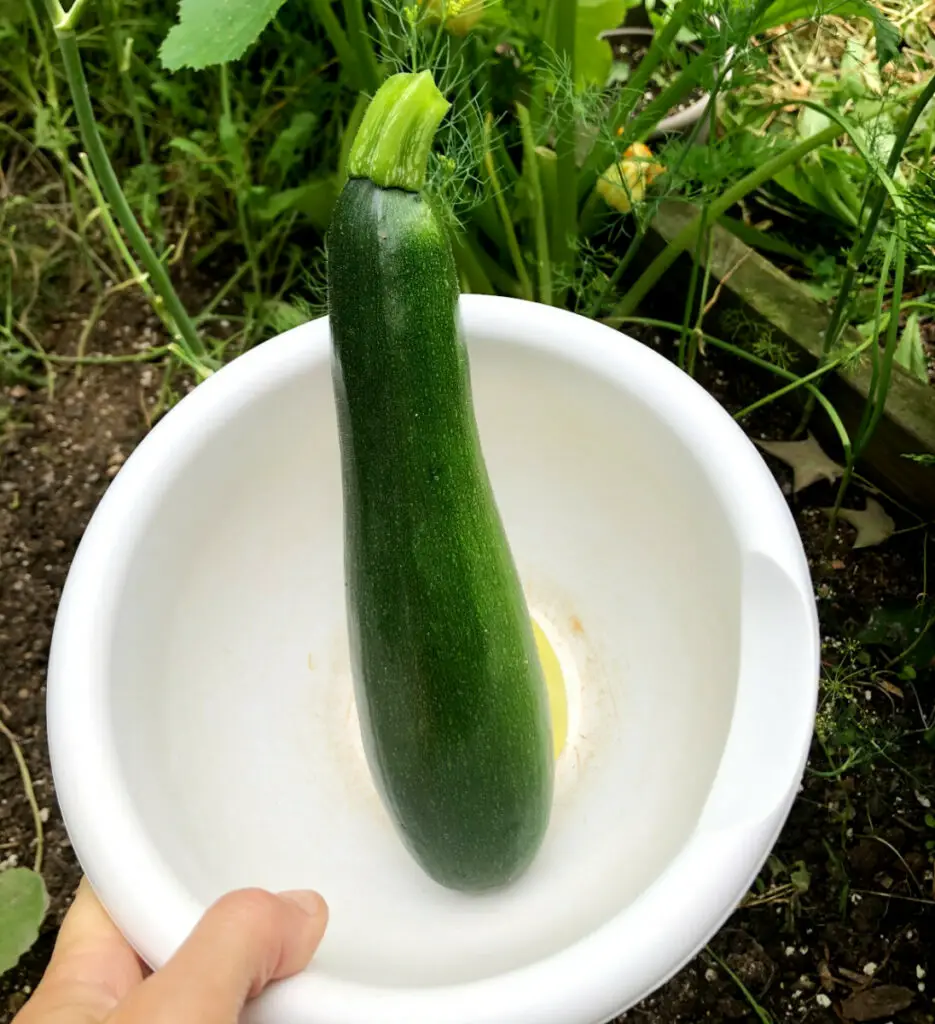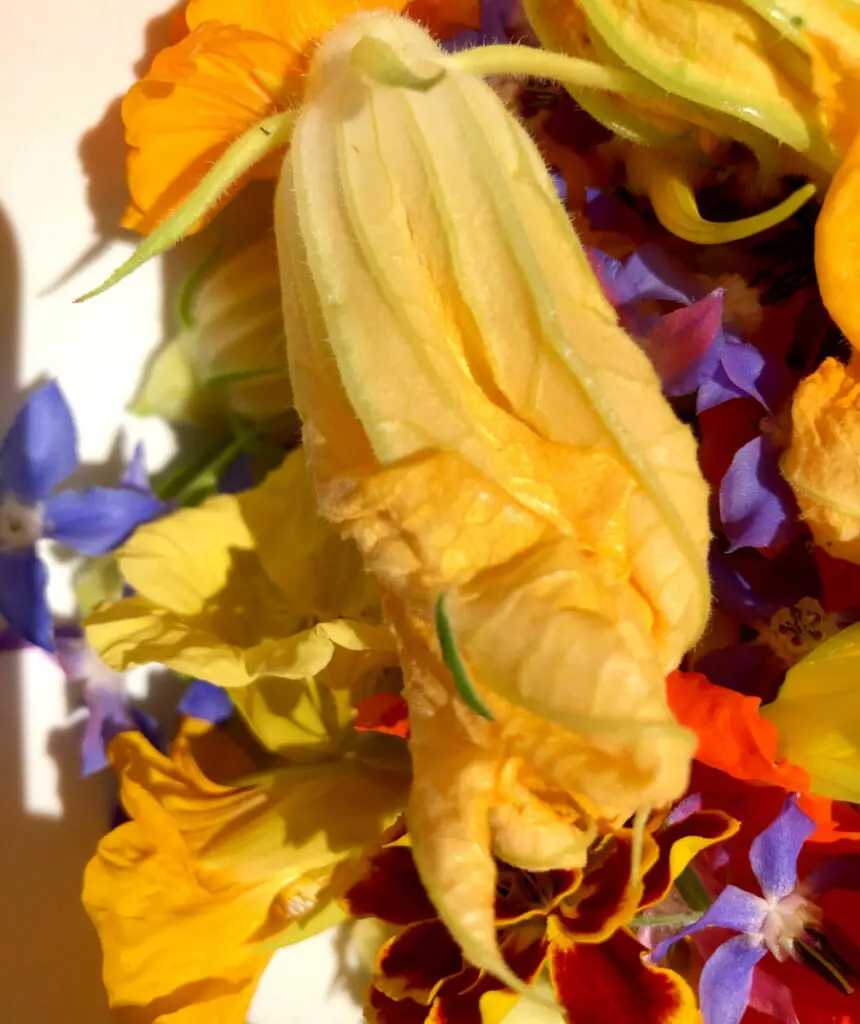Zucchini is part of the summer squash family. Other vegetables that are part of the summer squash family are Patty pan squash, Crookneck squash, Eight Ball squash, and yellow squash, to name a few. Summer squash is a group of seasonal gourds that has soft, edible skin and tender, juicy flesh.
- Zucchini and summer squash is a warm-weather vegetable and likes to grow in warm soil. It is not cold and frost tolerant therefore the seeds can be started indoors about 4 weeks before planting them outdoors.
- Plant zucchini in a location with direct sun, providing a minimum of 6-8 hours of sun.
- Plant zucchini and all summer squash outdoors after the last frost date when the danger of frost has passed and the weather is warm and the soil warmed up to about 65F.
- In warm zones, gardeners can plant even two crops of summer squash, one in spring and the other in the fall.
- A good guideline to start zucchini and summer squash indoors from seed is to sow them around the last frost date. In about 4 weeks the seedlings should be ready for planting outdoors and the weather warm enough to harden off and plant the seedlings outside.
- Keep the soil moist and do not let it dry out as this could slow down the germination process of killing germinating seeds.
- Always harden the seedlings off before transplanting them outside.
- Prepare the soil for planting by enriching it with organic matter like worm castings, aged animal manure, and compost. Zucchini and summer squash like fertile, loamy soil full of organic matter that drains well, is not compacted and holds an adequate amount of moisture.
- Dig a hole about as deep as the pot the seedlings are at. Fill the hole with the soil and tamp around the base of the plant to set it in place.
- Water thoroughly after planting.
- Summer squash and zucchini are heavy water feeders, therefore ensuring the plant receives enough soil moisture. Water regularly and deeply at the base of the plant, providing the plant with about 1-2 inches of water a week.
- Summer squash is considered a heavy feeder when it comes to fertilizer. Fertilize the plant with potassium and phosphorus-rich fertilizer regularly following the instructions of the fertilizer of your choice. Proper feeding is needed to ensure good fruit development.
- Inspect the plant for pets regularly. The most common pests that are attracted to summer squash and zucchini include squash vine borer, squash bug, aphids, and cucumber beetle. Remove the bugs and eggs by hand, spray them on the plant with soapy water, or sprinkle with diatomaceous earth. Use lures and traps.
- Harvest the fruit of zucchini and summer squash once it is the size you like. Larger fruit tends to be tougher. In general, the best is to harvest when the fruit is about 6 inches long, depending on the variety and when it reached the color it is supposed to have according to the variety you planted.
- You can save summer squash seeds if you will by letting the strongest fruit overripe on the vine, and the skin toughen up. Older, hard-skinned fruit will develop mature seeds suitable to save for the next growing season.
- Cut the older, tough-skinned fruit in half and take out the seeds. Rinse them, ferment them, rinse, let dry, and store them when completely dry in a sealed container to be used next season.

What month do you plant zucchini?
Start seeds indoors end of April or the beginning of May, depending on your specific hardiness zone. Direct sow, or plant seedlings outdoors about 2 weeks after the last frost date when the soil warmed up 65F.
I use seed starting trays with humidity domes to start my zucchini and summer squash seeds. Starting seeds indoors helps me to prevent rodents like chipmunks and squirrels from digging up the seeds in the garden and eating them. I start my seeds in seed starting trays before the last frost and plant mature seedlings once the danger of frost is over and the soil warmed up adequately for the plant to grow well.
I use this soil mix to start all my seeds indoors. This soil mix comes in a 1.5 cubic feet bag which is a huge amount for seed starting and is much better than a regular seed starting mix because this one has all the nutrients a young plant needs to grow well and healthy. Because this mix is such a high quality I do not need to fertilize my seedlings. This mix is light, holds water well, does not have any smell to it, and has lots of organic matter providing my young plants with the best start possible.
A GOOD READ: What do hardiness zones mean and how to determine yours AND How to start seeds and care for seedlings
What time of year does zucchini grow?
Zucchini grows best in the middle of the spring after the last frost date for summer harvest, and in late summer to be harvested in fall.

Do you need 2 zucchini plants to get fruit?
You do not need 2 zucchini plants to get fruit. But one plan must have male and female flowers. Pollen from the male flower needs to pollinate the female flower that is attached to a baby fruit.
Does zucchini come back every year?
No, zucchini does not come back every year. Zucchini is a part of the summer squash family and it is an annual vegetable, meaning that the plant grows only for one life cycle and dies after its life cycle is completed. In order to get a new zucchini plant, it needs to be started from the seed.
Does zucchini grow better in the sun or shade?
Zucchini is a warm-weather plant and needs full sun with at least 6-8 hours of sunlight.
Because zucchini is likely to wilt during hot summer days, you can cover it with a shade cloth to prevent the scorching sun from drying the plant too much during the day. This shade cloth can be reused on other plants as well as stored over winter to be used for the next growing season.
How do you grow zucchini successfully?
Zucchini is a heavy water feeder, meaning it needs to be generously and deeply watered. Plant it in a fertile, well-draining soil full of organic matter. Mulching the top of the soil will help to keep it moist. Fertilize zucchini with your preferred fertilizer periodically following the instruction on the packaging. If possible, hand pollinate to ensure the fruit is well set. Inspect the plant for pests, and remove them if any pests if found.
How to protect vegetable garden beds
How many times does a zucchini plant produce?
The Zucchini plant produces multiple fruits, it is a heavy producer. One plant can produce anywhere between 3-10 pounds of fruit. How well the plant will yield depends on the cultivar and how well the plant is cared for.

How often do you water zucchini?
Zucchini likes moist soil and needs to get at least 1-2 inches of water a week. Water the plant at the base, not overhead. Watering at the base will ensure water will be directed to the roots. If watered overhead, the plant can become prone to mildew and foliage would direct water out and away from the plant and its roots.
A GOOD READ: How and when to water vegetable garden, AND Should you water garden in the morning or at night?
Why is my zucchini growing but no fruit?
The most common reason the zucchini grows but not fruiting is poor pollination. Hand pollinates female zucchini flowers using pollen from male flowers using a small paintbrush. Ensure the plant is well watered and fertilized so it does not struggle for survival, but rather is cared for well so it has the strength to produce fruit.
This gardening season, I use this liquid fertilizer. It is a concentrate in a 1-gallon bottle that needs to be diluted about 10 mills concentrate in 1 gallon of water, so one bottle goes a long way in a home garden. I have no burning of the plants using this fertilizer and so far my garden thrives.
How to treat powdery mildew on zucchini and summer squash
Start as soon as you see the sign of the mildew. Spray the plant with milk mixture of 1 part milk to 2 parts water. If leaves are heavily infected, remove them from the plant before spraying the rest of the plant. Or use a mixture of baking soda, dish soap, and water mixing 1 tablespoon of baking soda, 1 teaspoon of dish soap, and 1 gallon of water. Mix and spray as soon as you see the sign of mildew. Repeat once a week if needed.
I use a garden sprayer similar to this one in my growing space. The sprayer comes in a very handy size and it is so easy to use. The long spout allows me to easily reach the top of the soil, any angles, and under the leaves.
When and how to harvest zucchini
Harvest the fruit when it is about 6 inches long and the color of the cultivar you planted. Larger fruit can have tougher skin and flesh and will not be as delicious and juicy. Harvest the fruit by cutting the stem of the fruit attached to the plant.
How to harvest and store zucchini seeds
Let one large zucchini mature and fully ripe on the wine. Then harvest it once the skin is tough and the color is dark with an orange hue, depending on the cultivar. Cut in lengthwise and take out the seeds. Rince the seeds and let them ferment in clean water for 2 days. Rince after those two days of fermenting and let them completely dry. Once completely dry, store in an air-sealed container to be planted the next season.
Can I eat zucchini flowers?
Yes, zucchini and summer squash flowers/blossoms are edible as well as fruit is edible. They can be eaten raw, sautéed, fried, or baked.


